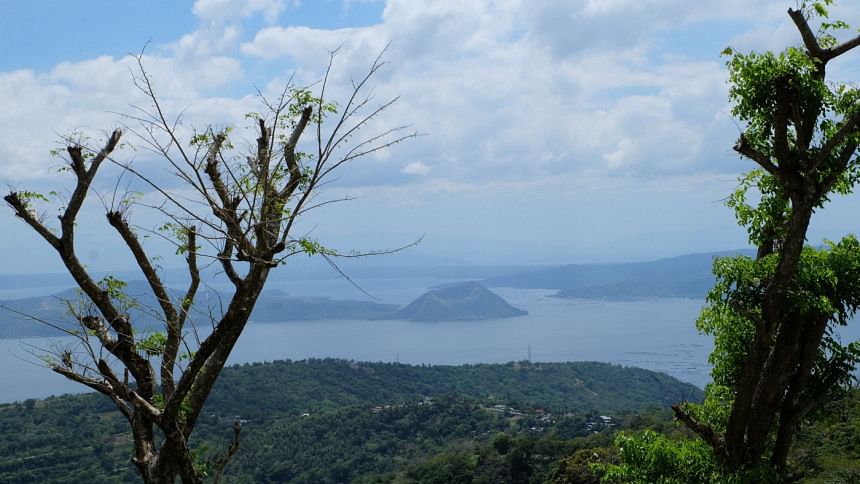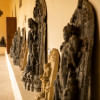Visiting Manila and Los Banos

The Philippines is a diversified island country consisting of some 7,000 islands and islets. Interestingly, the Philippines takes its name from Philip II, who was King of Spain during the Spanish colonisation of the islands in the 16th century. It is one of only two predominantly Roman Catholic countries in Asia, the other being East Timor. The country has always been one of my favourite destinations.
We reached Manila, situated on the shore of Manila Bay, in the afternoon and were lodged at Quezon City, one of the 16 cities that make Metro Manila.
Manila — the capital is the major centre for commerce, banking, finance, transportation, tourism, fashion and arts in the Philippines. With high rise corporate office buildings, shopping malls and wide avenues and parks dotted with ornamental trees and sculptures, the city is a modern mega metropolis by any count.
With trendy shopping malls, department stores, supermarkets and bazaars, the city is in fact a shoppers paradise. However, one is also frequented by large crowded, impoverished slums, and chaotic traffic.
The first morning, we dashed to the Intramuros, the historic walled area within Manila. Construction of the defensive walls was initiated by the Spanish colonial government in the late 16th century to protect the city from foreign invasions. It includes San Agustin Church, a UNESCO World Heritage Site.
For local transport, of course, we availed the Jeepneys, the most popular means of public transportation ubiquitous in the Philippines. These Jeeps are known for their crowded seating and colourful artwork, which have become a widely known symbol of Philippine culture and art. Jeepneys were originally made from U.S. military jeeps left over from World War II.
In the evening, we browsed at the Rizal Park, considered the largest urban park in Asia. Nearby, Roxas Boulevard is a popular waterfront promenade that runs along the shores of Manila Bay and we were in time to watch the mesmerising sunset. The area is famed for its hotels, restaurants, cafes, bistros and parks and after walking for miles settled for a well-deserved dinner with salmon teriyaki, grilled bagnus (milk fish), white rice and of course halo halo. We were then entertained to a wonderful evening of Filipino dances and music drawn from all corners of the country.
Bagnus is the national fish of the Philippines. It's delicious, looks and tastes almost like our hilsa that is served fried, grilled or barbequed. That's the reason why it turned out to be one of my favourite fish. However, they have not learned to cook the fish with our appetising masala curry.
Halo-halo is a popular Filipino cold dessert, which is a concoction of crushed ice, evaporated milk and various ingredients including, among others, sweetened beans, coconut, sago, rice, boiled root crops in cubes, fruit slices, and topped with a scoop of ice cream.
In the evenings, it was a pleasure to stroll at Makati, the commercial hub and Bonifacio Global City at Taguig, one of the leading financial and lifestyle districts of the country. The locals were found enjoying concert and engaged in playing bingo. Whenever in the Philippines, I was tempted in buying Barong, an embroidered formal dress shirt, which is usually worn over an undershirt. It is traditionally made up of piña, a fibre made from the leaves of a pineapple plant. Barong is sometimes combined with silk or polyester to create a textile fabric. Banana fabric is another sheer fabric used in formal occasions.
One fine morning, we took time for an entire day at Tagaytay, 2-hour drive from Manila. The Taal Lake and volcano presents one of the most picturesque and attractive views in the Philippines. The volcano is still active in an island near the middle of Taal Lake. Later, we relished scrumptious typical Filipino lunch with sinigang, fried tilapia, grilled chicken and of course complete with halo halo.
Sinigang is a Filipino soup characterised by its sour and savoury taste, most often associated with tamarind. It is one of the more popular viands in Filipino cuisine. Sinigang typically use meat or seafood (e.g. fish, beef, shrimp or chicken) stewed with tamarind, tomatoes, garlic, and onions. Other vegetables commonly used in the making of sinigang include okra, white radish, kangkóng, beans and eggplant.
Over the weekend, we visited Los Baños, a picturesque municipality in the province of Laguna on the northern slopes of Mount Makiling — a 2-hour drive from Manila. The area is known among tourists for its hot spring resorts.
We were lodged for two days as we explored the city and adjoining areas. Los Baños also hosts two universities: the University of the Philippines Los Baños (UPLB) and University of the Philippines Open University, along with the famous, the International Rice Research Institute (IRRI).
One morning, we drove to Santa Cruz, capital of the province of Laguna, considered as the business and commercial centre on the eastern part of the province. We were lucky to witness an amazing street carnival with the participants attired in colourful dresses parading to the beat of Filipino music. Later, relished lunch with pumpkin soup, fried calamari, grilled vegetables, seafood salad, and salted duck eggs. The salted eggs are made by soaking duck eggs in brine, or packing each egg in damp, salted charcoal and are recognised by their maroon/green coloured shell.
Nearby, Paete has had a long reputation for its craftsmen highly skilled in wood carving and its embellishment. With a passion for wood carving, I could not resist the temptation to collect few. In the afternoon, in order to enjoy the vibe of the countryside, we visited Magdelana Municipality and later spent some time at one of the villages, Ibabaong Butnong Barangay. The entire landscape was similar to our southern districts enveloped in green paddy fields with coconut plantations, banana plantations and mango orchards. The people are by and large friendly and hospitable and it was great to spend time with them.
We took a break at Victoria famous for ducks and eggs. I have a desire to try exotic foods wherever I travel. This time was no exception. During my previous visits to the Philippines, I have enjoyed balut. A balut is a fertilised bird egg (usually a duck) which is incubated for a period of 14 to 21 days and then boiled or steamed. Traditionally, the fertilised eggs are incubated in the sun or buried in sand and stored in baskets to retain warmth. The contents are eaten directly from the shell. The partially-developed embryo bones are soft enough to chew and swallow as a whole. The balut I relished this time was indeed a well-developed embryo with recognisable features of the duckling.
Visiting Los Baños, a charming municipality in the province of Laguna, being an academic hub with IRRI and UPLB was splendid. The weekend at the picturesque Taal Volcano, being the world's smallest active volcano and having enjoyed the spectacular street carnival at Santa Cruz was great. The hospitable Filipino people, melodious music and the delightful cuisine particularly sinigang and halo halo is indeed inviting. I feel the strong urge to visit the far away country again.

 For all latest news, follow The Daily Star's Google News channel.
For all latest news, follow The Daily Star's Google News channel. 








Comments